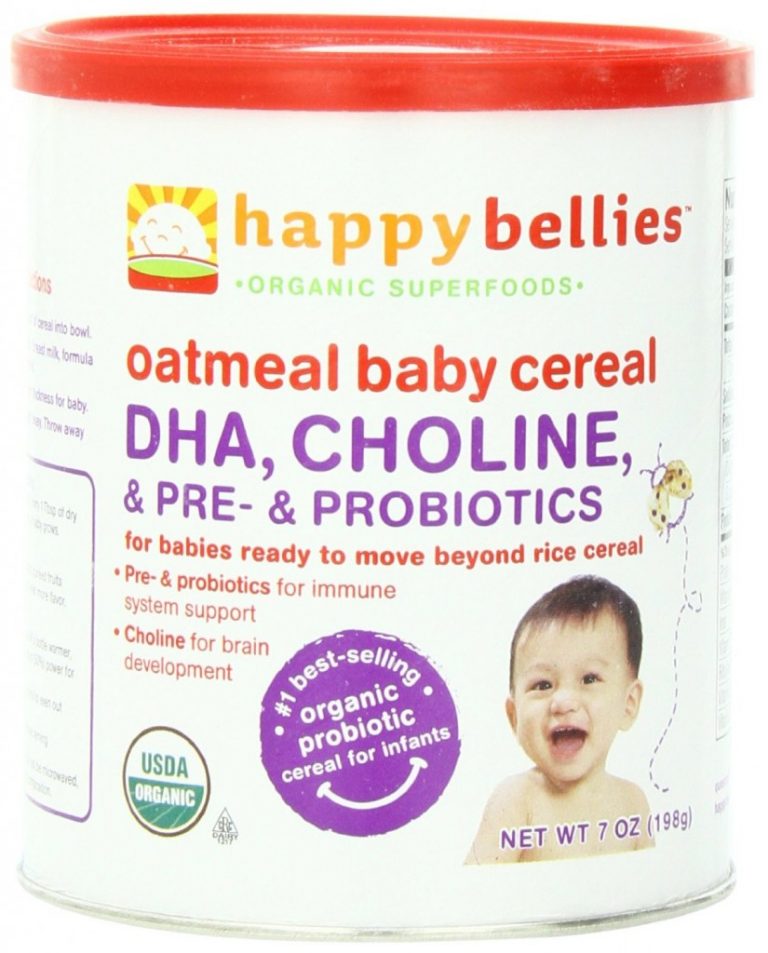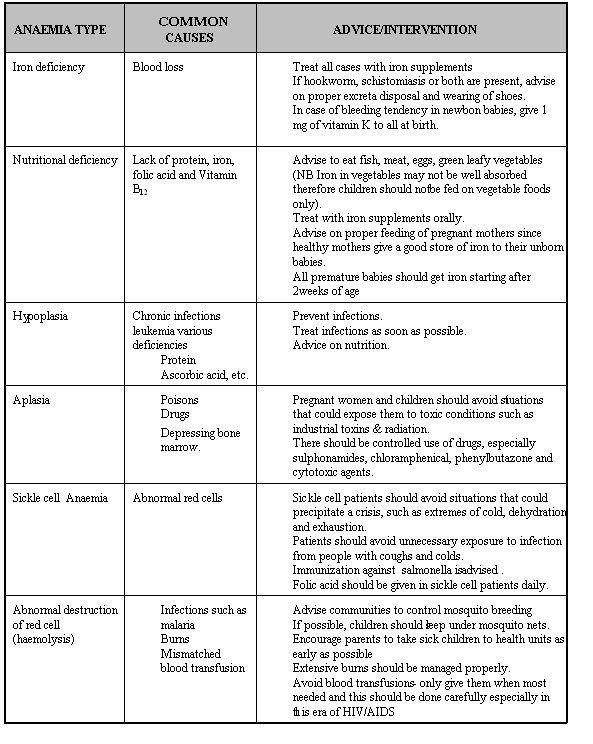What are good starter foods for babies
When to Start Baby Food
Starting solids is an exciting and important milestone in baby’s development—one that not only opens them up to a brand-new world of flavors and textures, but also puts them on the right path to growing healthy and strong. Here’s what you need to know about how and when to start baby food for a smooth transition.
In this article:
When to start baby food
How to start baby on solids
Best first foods for baby
Introducing allergenic foods
When to Start Baby Food
Knowing when to start baby food is both crucial and tricky. Starting baby on solids too early means you might increase the risk of choking, obesity and bellyaches, but introducing solids too late means you might slow baby’s growth and encourage an aversion to solid foods, among other conditions. Fortunately, doctors have zeroed in on a sweet spot for starting baby food, which is sometime between 4 and 6 months of age—though, ideally, baby should be receiving their nutrition exclusively from breast milk until the six-month mark, according to the American Academy of Pediatrics (AAP). How to tell if it’s time for starting solids for your little one? Baby will give you clues, including:
• Baby can sit in a high chair comfortably on their own. This is a major sign in terms of when to start baby food, says Lauren Kupersmith, MD, a pediatrician at Hassenfeld Children’s Hospital at NYU Langone in New York City. It means baby can hold their head up and doesn’t need to be propped up to stay in the upright position, which is important to avoid choking.
• Baby looks interested at mealtime. Babies likes to mimic what we do, so if your child likes to sit up like a big kid and watch you eat, then by all means let them try eating too.
• Baby can move food to the back of their throat to swallow. But if baby tends to push the food out of their mouth—not because they don’t like it, but because they can’t seem to get the food to where it needs to go—hold off on starting solids.
How to Start Baby on Solids
At 4 to 6 months, most of baby’s nutrition will still come from breast milk or formula, so don’t worry if baby doesn’t like eating food right away. Introducing solids is a gradual process, and every baby learns in their own time. Here are some general guidelines for how to start baby on solids:
Introducing solids is a gradual process, and every baby learns in their own time. Here are some general guidelines for how to start baby on solids:
• Feed baby with a spoon. Letting your child go at it with their hands may seem tempting (and super-cute), but it’s best that they learn the right way from the get-go. (And even then, be prepared to clean up more than a few messes!) Also, never put cereal (or any other food) in baby’s bottle—it’s a choking hazard.
• Start slowly. When introducing solids, a half spoonful will do at first—you may even want to talk baby through it (“Yummy!”). To make it easier for baby to get accustomed to the idea of swallowing solids, start mealtime with a little breast milk or formula, then offer some food (again, no more than a half teaspoon at a time) and finish off with more breast milk or formula. If baby cries or turns away when you present the spoon, try again some other time. Start off with introducing solids at one meal a day, then slowly work your way up. The morning is a good place to start, since baby is often hungriest at that time. When starting solids, baby typically won’t eat more than an ounce or two in one sitting.
The morning is a good place to start, since baby is often hungriest at that time. When starting solids, baby typically won’t eat more than an ounce or two in one sitting.
• Try new foods more than once. Since babies’ tastes will evolve, you may need to try a food 20 times before a baby actually likes it, says Kupersmith.
• Stick with the same food for three days before trying another one. This makes it easy to track whether baby is allergic to a particular food.
• Try foods in different forms. If baby doesn’t like pureed food, try it mashed. After all, baby is learning about new textures as well as new tastes. It may be a case of trial and error until you find a winner.
Best First Foods for Baby
Got baby safely strapped into the high chair and bib? You’re ready to finally start feeding baby solids! There aren’t any official food rules for babies starting solids, and there’s no scientific evidence suggesting you should introduce one type of food before another, assuming the foods aren’t choking hazards.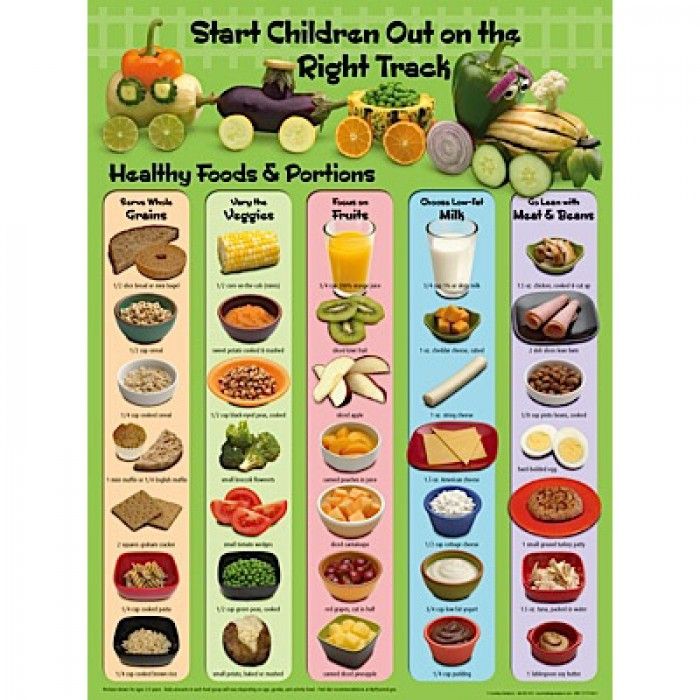 Nevertheless, baby cereal (such as oatmeal, rice and barley) is an “easy training food,” says Kupersmith, which is why it’s often recommended as baby’s first food; you can always mix it with more milk to build up to a thicker consistency. Many doctors also recommend starting vegetables before fruits, but there’s no evidence that this would make babies like vegetables more when they grow up—babies innately love sweets, and the order of introducing solids to baby doesn’t change that.
Nevertheless, baby cereal (such as oatmeal, rice and barley) is an “easy training food,” says Kupersmith, which is why it’s often recommended as baby’s first food; you can always mix it with more milk to build up to a thicker consistency. Many doctors also recommend starting vegetables before fruits, but there’s no evidence that this would make babies like vegetables more when they grow up—babies innately love sweets, and the order of introducing solids to baby doesn’t change that.
So why not simply start introducing solids with something you think baby will like? Here are a few common first foods for baby that are healthy and easy to eat (and, in the case sweet potato and banana, also easy to digest). Whatever you decide to feed baby, mash it with a fork or puree before serving whenever introducing solids.
- Baby cereal, such as oatmeal, rice, barley
- Sweet potato
- Banana
- Avocado
- Apples
- Pears
- Green beans
- Butternut squash
If your child has been breastfeeding, check with your pediatrician about getting a jump on pureed chicken or beef when you’re starting solids. These foods contain easily absorbable forms of iron and zinc, which baby needs by 4 to 6 months, according to the AAP.
These foods contain easily absorbable forms of iron and zinc, which baby needs by 4 to 6 months, according to the AAP.
At around 9 months, baby should have already worked their way up to a variety of foods, including cereal, vegetables, fruits, meats, eggs and fish (see below regarding the last two). (Keep in mind, though, that baby will still get the majority of their nutrients from breast milk or formula until age one.) By now, baby will probably settle on three meals a day along with two snacks. Let them consume about 4 ounces of solids at each meal (equivalent to a small jar of strained baby food) and about half that amount for each snack.
Save honey and cow’s milk for after baby’s first birthday—there’s a risk for infant botulism with honey (a type of bacterial poisoning), and baby’s tummy isn’t prepared to digest large amounts of cow’s milk until they’re about one year old. Avoid adult processed foods and foods that are choking hazards (such as sticky foods, like large gobs of peanut butter; hard foods that are difficult to gum, like raw vegetables, nuts, seeds and popcorn; and round, slippery foods that haven’t been cut up, like grapes and cherry tomatoes). Instead, the first foods for baby, and those in the months that follow, should be soft and served mashed, pureed or (once baby seems ready to move up from the really mushy stuff) cut up into really little bits. “There’s pretty much free reign at that point,” Kupersmith says.
Instead, the first foods for baby, and those in the months that follow, should be soft and served mashed, pureed or (once baby seems ready to move up from the really mushy stuff) cut up into really little bits. “There’s pretty much free reign at that point,” Kupersmith says.
Introducing Solids Chart
Hesitant about improvising your first foods for baby? That’s okay too. If you prefer an “introducing solids chart” to help you plan out baby’s path, the guide below can come in handy.
Image: The Bump
Introducing Allergenic Foods
Much of the confusion around when to start baby food stems from questions concerning allergenic foods. These are foods that babies are most often allergic to. The major culprits include dairy, eggs, fish, peanuts and tree nuts. In the past, parents were advised to hold off on exposing baby to these foods, but now doctors recommend introducing them early, often and in age-appropriate format, which means starting off with purees and soft textures.
“Dairy is an easy starting point, given options such as yogurt and cheese,” says David Stukus, MD, director of the Food Allergy Treatment Center at Nationwide Children’s Hospital and a spokesperson for the American College of Allergy, Asthma, & Immunology. You can also try scrambled eggs in small amounts, although baby may not be too pleased with the texture at first.
As far as peanut products go, the National Institutes of Health issued new guidelines in 2017 that encourage parents of children at high risk for peanut allergies to incorporate them into baby’s diet at 4 to 6 months of age. Giving these babies peanut products before the age of one actually decreases their risk of developing a peanut allergy before age 5 by 81 percent, compared to kids who are introduced to peanuts later in life. Parents of kids without the food allergy risk can start peanut products whenever they’d like, as long as the nuts are in an age-appropriate form: Peanut butter can be thinned out with water or mixed into a fruit or vegetable puree, and peanut powder can also be mixed into cereal and fruits. Don’t give whole peanuts or pieces of peanuts, since they’re a choking risk.
Don’t give whole peanuts or pieces of peanuts, since they’re a choking risk.
Allergic reactions to food are never just a fluke; they will happen with every exposure. Symptoms can range from mild (such as a rash or vomiting) to severe (such as trouble breathing). If baby has a food allergy, you’ll notice a reaction within minutes or up to two hours after eating the problematic food, Stukus says. If the symptoms are severe, call 911 right away. Otherwise, talk to your pediatrician; she can help confirm whether it’s an allergy or some other type of condition (such as a viral illness).
Expert bios:*
Lauren Kupersmith, MD, IBCLC, is a pediatrician and clinical instructor at Hassenfeld Children’s Hospital at NYU Langone in New York City, as well as a certified lactation consultant. She earned her medical degree from New York Medical College in 2005.
David Stukus, MD, is the director of the Food Allergy Treatment Center at Nationwide Children’s Hospital, an associate professor of pediatrics in the division of allergy and immunology and a spokesperson for the American College of Allergy, Asthma, & Immunology. He earned his medical degree from University of Pittsburgh School of Medicine in 2002.
He earned his medical degree from University of Pittsburgh School of Medicine in 2002.
Updated January 2020
Please note: The Bump and the materials and information it contains are not intended to, and do not constitute, medical or other health advice or diagnosis and should not be used as such. You should always consult with a qualified physician or health professional about your specific circumstances.
The Ultimate Guide to Baby’s First Foods from 4-6 Months Old
If you have a baby between 4 and 6 months old, you’re probably starting to think about what their first foods will be…which means you probably have questions about baby’s first foods, too! Things like: “When should I start?” “Do I need to stick to single-ingredient foods?” and “How do I safely introduce common allergens like peanut butter without freaking out?!” Chances are, you miiiiight be a little overwhelmed at the idea of first foods, too. I know it’s a lot to think about, but the good news is that you’ve found your way here! And now that you’re here, I can help.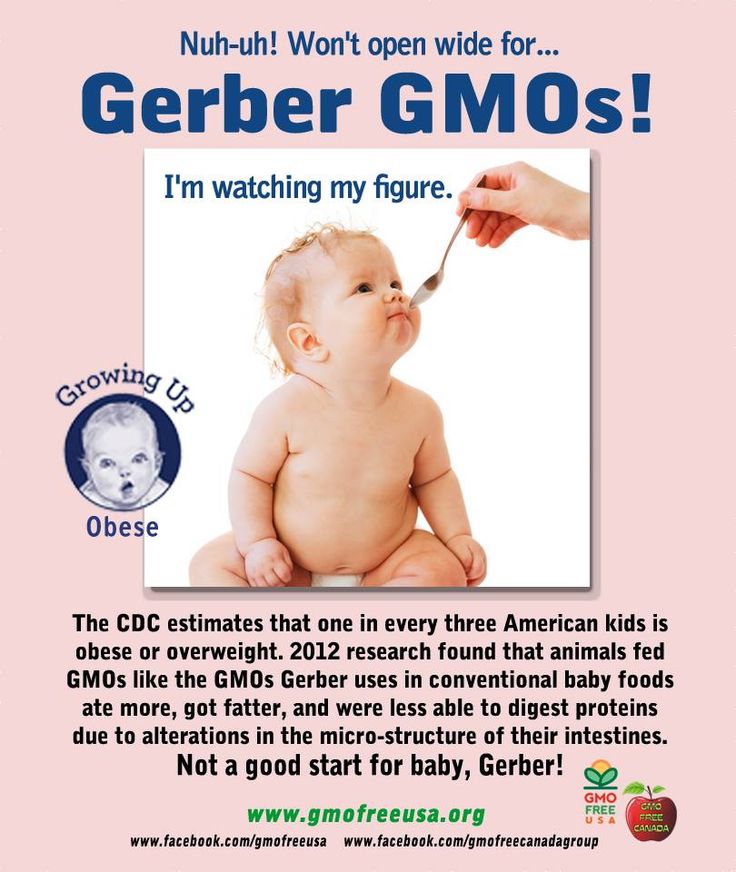
As a mom of two and a pediatric dietitian, I’m writing this post to help you navigate the nerves and the new chapter that is buying, preparing, and serving up baby’s first foods! Whether you’re going for purees, baby-led weaning, or a combination of both, consider this your ultimate guide to what first foods to serve and how to introduce them to your baby safely.
P.S. Don’t forget to save this post! I know it’s one you’ll want to come back to again and again.
This post contains affiliate links. As an Amazon Associate, I earn from qualifying purchases at no extra cost to you.
Skip right to the first foods info you’re looking for:
- When To Serve Baby Their First Foods
- Safety For Baby’s First Foods
- Purees vs. Baby-Led Weaning: What’s Right For You?
- The Best Foods To Introduce Baby To Between 4 & 6 Months Old
- The Ultimate Baby’s First Foods List
- Best Finger Foods & Baby-Led Weaning First Foods
- The Best Pureed First Foods
- The Best Easy-To-Make First Foods
- The Most Nutritious First Foods
- The Best Vegetarian First Foods
- Foods That Should Be Avoided
- Baby’s First Foods Chart: What, When & How To Serve Common First Foods to 4- to 6-Month-Old Babies
- First Foods For Babies With Allergies
When To Serve Baby Their First Foods
Although some people will serve baby’s first foods earlier, I recommend starting solids closer to the six-month mark. You want to avoid adding rice cereal or any other food to their bottle, and instead, begin solids when they display the signs of readiness listed below. By waiting to serve baby’s first foods until they’re truly ready, you increase their safety and chances of success as a new eater.
You want to avoid adding rice cereal or any other food to their bottle, and instead, begin solids when they display the signs of readiness listed below. By waiting to serve baby’s first foods until they’re truly ready, you increase their safety and chances of success as a new eater.
Signs of Eating Readiness
Your baby is ready to start solids if they:
- Can sit upright
- Can sit unsupported
- Have good head and neck control
- Have some practice bringing toys or objects from their hand to their mouth
- Show an interest in food (By reaching for what you’re eating, intently watching as others eat, etc.)
Can I Give My 4-Month-Old Baby Food?
Some pediatricians may okay solids around four months, but again, I generally recommend waiting until closer to six months, and when baby is displaying those signs of readiness.
There are more benefits to waiting than there are to starting earlier. Before six months, babies get everything they need from breastmilk or formula, so starting solids early won’t help them sleep better, grow faster, or, you know, become a professional athlete!
If you want to get your four- or five-month-old baby involved in mealtime, I recommend getting them acquainted with food and eating in these ways:
- Sit them near you while you’re eating
- Give them a silicone spoon to hold (I like NumNum GooTensils, EZPZ Tiny Spoons, and Olababy Training Spoons) and let them practice bringing it to their mouth
- Give them teething toys, like Sophie, or this elephant, to desensitize the gag reflex
FAQ: Do Formula- and Breast-Fed Babies Have Different Nutritional Needs?
Formula and breast milk are both completely nutritionally satisfactory for the first six months of life and beyond. So when it comes to starting solids, it doesn’t matter whether your baby has been receiving breast milk or formula.
So when it comes to starting solids, it doesn’t matter whether your baby has been receiving breast milk or formula.
That said, babies who are exclusively breastfed should receive a Vitamin D supplement, as levels in breastmilk are low. Formulas on the other hand are typically fortified with Vitamin D, so formula-fed babies don’t need one. Another thing to consider for a baby’s nutrition is iron. Babies build up an iron reserve from their mothers while in utero, but these stores begin to decline around six months of age for all babies.
Safety For Baby’s First Foods
Safety is a huge concern for parents when starting solids. Whether you start with baby foods, purees, or baby-led weaning, there are certain parameters to follow to make sure baby’s intro to food is safe and successful.
Choking Hazards for 4- to 6-Month-Old Babies
Choking hazards for babies ages four to six months old include any foods that are hard, crunchy, sticky, or chewy, as well those that are dangerous shapes.
Common hazardous foods are:
- Chips
- Popcorn
- Pretzels
- Raw Apple
- Globs of Nut Butter
- Hot Dogs
- Grapes
- Large seeds (sunflower, pumpkin, for example)
- Whole nuts
Many of these foods can be prepared safely to minimize the risk of choking, but they remain a choking hazard if they’re in their “natural” states until children turn four years old.
You can minimize choking risks by making sure your child is seated upright and strapped in a high chair with good trunk support. Foot support on a high chair is also helpful when your baby is starting out because it reinforces their stability, and when they’re more stable, they can chew and swallow more safely!
AAP & CDC Recommendations
The Center for Disease Control and Prevention (CDC) and the American Academy of Pediatrics (AAP) recommend starting solids around six months of age, but not before four months. Again, some pediatricians may okay solids around four months of age, but I usually recommend waiting until six months to make sure baby is showing the physical signs of readiness I outlined above.
The one exception may be for introducing certain allergens to certain infants, depending on their inherent level of risk. Speak with your pediatrician or allergist to see if they want to start your baby on certain foods early.
Purees vs. Baby-Led Weaning: What’s Right For You?
Before you serve baby their first foods, you’ll need to decide what kinds of foods you want to offer. And while there’s a lot of dialogue and opinions about the “best” way to feed a baby, I want you to know there isn’t one right way to do this. You can start with purees or baby-led weaning, or you can do a combination of both.
Tip: If you take a puree approach, help them learn to self-feed by offering baby preloaded spoons and letting them bring the food to their mouth.
Babies are very intuitive about getting the nutrition they need, so full permission to opt for the feeding style that’s comfortable for you. They’ll be able to get enough to eat either way! If simple textures feel easier and lower-stress for you, start with purees. If you’re ready to tackle preparing foods in a way that’s safe for baby, go for baby-led weaning. And if you’re on the go a lot or need a caretaker to feed your baby sometimes, maybe a hybrid approach is best. It truly doesn’t matter as long as you’re helping them foster independence in eating, and offering a variety of different foods.
If you’re ready to tackle preparing foods in a way that’s safe for baby, go for baby-led weaning. And if you’re on the go a lot or need a caretaker to feed your baby sometimes, maybe a hybrid approach is best. It truly doesn’t matter as long as you’re helping them foster independence in eating, and offering a variety of different foods.
One thing that DOES matter when it comes to feeding your baby is letting them be in charge of how much they eat (while you learn to interpret their hunger and fullness cues). And you can do this whether you’re feeding them purees or finger foods.
Baby Signs Of Hunger:
- Reaching for food
- Moving toward the spoon
- Opening their mouth
- Pointing to food
- Excited at the sight of food
Baby Signs Of Fullness:
- Turning away from food
- Batting spoon away
- Clamping mouth shut
- Playing with/throwing food
- Significantly slowed pace of eating
- No longer showing interest
The Best Foods To Introduce Baby To Between 4 & 6 Months Old
A common question I get is, “What baby foods should I introduce first?” And really, there isn’t one “best” first food. You do not have to start with only baby cereal or only veggies or fruits. In fact, you shouldn’t! Research shows that introducing babies to a wide variety of foods early on is what’s most beneficial.
You do not have to start with only baby cereal or only veggies or fruits. In fact, you shouldn’t! Research shows that introducing babies to a wide variety of foods early on is what’s most beneficial.
That said, my favorite first food is avocado! It’s a wonderful source of healthy fat, and it’s loaded with vitamins and minerals. Fat is essential to the developing brain and central nervous system, so we want to prioritize it within a baby’s first foods and make sure it’s completely unrestricted during their first two years of life.
(We also want to prioritize iron, because it’s a common dietary deficiency, and our babies begin to run out of the iron stores they got in utero by about six months.)
It’s Okay If Baby’s First Foods Have Multiple Ingredients!
You may choose to serve solely single-ingredient foods like avocado or sweet potato, but know that it’s not necessary to do so. It can be really helpful to serve a variety of new foods together, so they get used to different tastes and textures. Plus, there are nutritional benefits to mixing foods. For example, yogurt—a common first food for babies—can be fortified with mashed fruit, nut butter, or hemp seeds to up the nutritional value. (But if you ever notice a reaction or suspect an allergy to a component of a food combination you’ve been serving, stop serving the suspected allergen and contact your pediatrician.)
Plus, there are nutritional benefits to mixing foods. For example, yogurt—a common first food for babies—can be fortified with mashed fruit, nut butter, or hemp seeds to up the nutritional value. (But if you ever notice a reaction or suspect an allergy to a component of a food combination you’ve been serving, stop serving the suspected allergen and contact your pediatrician.)
PSA: Skip The Baby Cereal
The recommendations from years past telling parents to start with rice-based infant cereals are outdated now. Rice cereals aren’t super nutritious, and we don’t want to rely too much on rice due to potential exposure to arsenic. So instead of cereals, offer new foods in safely-prepared forms. This is way more nutritious, and it exposes them to different flavors, textures, and nutrients which are beneficial for growth and development and can protect them against food allergies and picky eating.
The Ultimate List of Baby Foods
I’m covering allll the best kinds of baby foods separately, so you get all the juicy info and context you need.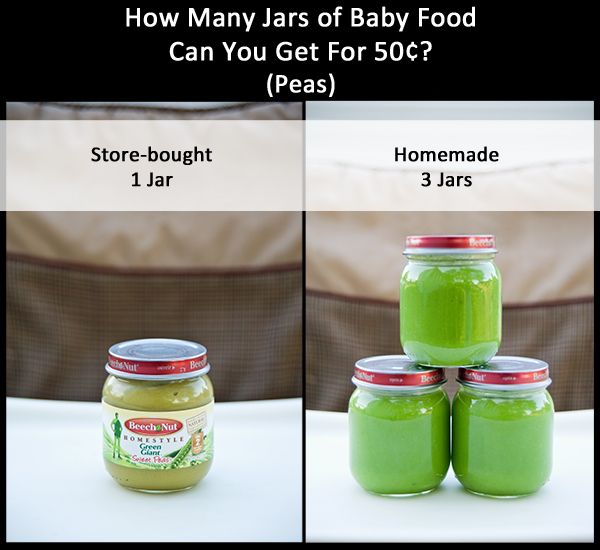 Then, I’m combining them all into one big, bad, comprehensive list of the best first foods for baby at the end.
Then, I’m combining them all into one big, bad, comprehensive list of the best first foods for baby at the end.
SKIP TO THE LIST
Best Finger Foods & Baby-Led Weaning First Foods
For baby’s first foods, I like to suggest approachable options like avocado, sweet potato, and banana. These can be prepared and served baby-led-weaning-style by cutting them in wedges or crescent shapes that can be gripped with a palmar grasp. Bananas can be served as halves or in thirds-long ways. Just stick to serving items in longer shapes, about the width of two adult fingers, for the first few months of BLW. This way, baby can hold them and bring them to their mouth. Once your baby is a little bit older—usually around 9 months—many foods can be served safely in smaller pieces.
The Best Pureed First Foods
If you’re going the puree route, you can start with many of the same foods. Just mash up the sweet potato, avocado, banana—or whatever else, really!—and serve those as purees. You may want to thin them some with breastmilk or formula.
You may want to thin them some with breastmilk or formula.
But shortly after starting with these foods, I would move on to introducing allergenic foods, because the early and repeated introduction of allergenic foods can be protective against the development of food allergies in babies, specifically for peanuts. Foods like yogurt and peanut butter may be good early options for allergenic introductions and are already in pureed form. Just start with small amounts.
The Best Easy-To-Make First Foods
Foods that are naturally soft are the easiest to prepare for young eaters. Banana, yogurt, apple sauce, and avocado are all great options that are easy to serve with little to no prep. You can also mix creamy nut butter with yogurt and incorporate other mashed fruits, like raspberries and blackberries, to ramp up the nutritional value while keeping prep extremely low.
Don’t feel like you need to shy away from foods that aren’t naturally soft, either! Many other fruits and veggies, like sweet potato, broccoli, and pears, can also be safely served with simple steaming or roasting techniques. Just make sure to cook these foods until they’re soft enough to be smashed between your fingers, so baby can safely enjoy them, and present them in a shape or style that they can safely navigate. (Soft foods can also be served to them on a pre-loaded spoon if they can’t be eaten by hand, yet.)
Just make sure to cook these foods until they’re soft enough to be smashed between your fingers, so baby can safely enjoy them, and present them in a shape or style that they can safely navigate. (Soft foods can also be served to them on a pre-loaded spoon if they can’t be eaten by hand, yet.)
Low-Prep First Food Options:
- Banana
- Yogurt (Can mix with mashed berries or nut butter)
- Apple Sauce
- Avocado
- Steamed Veggies (Soft enough to mash between your fingers)
The Most Nutritious First Foods
There are so many great, nutrient-dense choices for baby’s first foods that are safe by six months of age no matter what type of foods you serve. (But it’s true that, if you take a baby-led weaning approach, you’ll probably have more options.) Sardines and salmon (fresh or canned) are both loaded with omega-3 fatty acids, DHA, protein, and tons of vitamins and minerals, which make them highly nutritious first foods! From the plant kingdom, sweet potato and avocado are nutrient-dense foods with a wide variety of vitamins and minerals including vitamin A, vitamin B6, vitamin C, and magnesium.
The Best Vegetarian First Foods
Vegetarian foods are some of the best first foods for baby! There are tons of wonderful and nutritious fruit and veggie options that suit young eaters, like berries, bananas, avocados, potatoes, broccoli, squash, and many others. Non-produce vegetarian items are great first foods for baby, too. Think tofu strips, eggs (yolk and white), beans, nut butter, and oatmeal.
Just be sure you serve these in safe shapes and forms, and that they’re soft enough to be mashed between your fingers. Always avoid serving things that are hard, sticky, or chewy, and keep in mind that many raw vegetables and fruits are choking hazards (like celery and apple).
Foods That Should Be Avoided
While most foods have a place in most diets, there are some foods to avoid serving your 4- to 6-month-old baby:
Added Sugar
To make sure our babies get the most nutrition possible during this important phase of growth and development, it’s best to avoid added sugar for children under two. Added sugar doesn’t have much nutritional value, so it’s best to limit it as much as possible and avoid it altogether if possible.
Added sugar doesn’t have much nutritional value, so it’s best to limit it as much as possible and avoid it altogether if possible.
Want to offer baby fun, homemade foods like cookies, bars, and muffins once they are fully established on solids? You still can! Just use the recipes in my No Sugar, Still Sweet cookbook, where everything is sweetened with fruit alone.
Honey
Babies should strictly avoid honey before 12 months of age. Honey can be contaminated with spores of a bacteria called clostridium botulinum. In babies under one, these spores can multiply and produce a dangerous toxin that causes infant botulism.
Related: Honey for Babies & Toddlers
Sodium
Finally, sodium should be limited. For babies ages four to six months, the recommended sodium limit intake for a day is 110 mg, which includes any sodium present in breast milk and/or formula.
Fruit Juice
The American Academy of Pediatrics recommends no fruit juice before 1 year of age. Juice offers very few nutritional benefits and therefore isn’t a helpful addition to a baby’s diet.
Juice offers very few nutritional benefits and therefore isn’t a helpful addition to a baby’s diet.
- Under 1: No Juice
- Age 1-3: 4 Oz Daily Max
- Age 4-6: 4-6 Oz Daily Max
- Age 7-18: 8 Oz Daily Max
The Ultimate Baby’s First Foods List
- Avocado
- Sweet Potato (Mashed or Steamed)
- Broccoli (Steamed or Roasted)
- Pears (Steamed or Roasted)
- Butternut Squash
- Mango
- Banana
- Yogurt*
- Nut Butter* (Mixed-In To Purees or Spread Thin on Toast)
- Oatmeal
- Apple Sauce
- Mashed Raspberries
- Mashed Blueberries
- Mashed Blackberries
- Canned Sardines*
- Canned Salmon*
- Potatoes (Mashed or Steamed)
- Squash (Steamed or Roasted)
- Tofu Strips*
- Baby-Safe Eggs* (Try omelet-style and cut into strips!)
- Beans (Mashed)
*Common Allergens
Baby’s First Foods Chart: What, When & How To Serve Common First Foods to 4- to 6-Month-Old Babies
| BABY’S FIRST FOOD | WHEN TO SERVE | HOW TO SERVE |
| Avocado | 6 Months or Later | Mashed, mixed-in to sauces, and purees, or in wedge shapes baby can grip (BLW). |
| Oatmeal | 6 Months of Later | Prepare with breastmilk or formula. Option to mix in yogurt, nut butter, mashed berries, or mashed banana. |
| Banana | 6 Months or Later | Mashed, mixed into sauces and purees, cut in halves or third-long pieces (BLW). |
| Sweet Potato | 6 Months or Later | Roasted or steamed so they’re soft enough to mash between your fingers. |
| Mango | 6 Months or Later | Cut into wedge-shaped pieces that baby can grip. Or, give baby the pit to work on! |
| Eggs (Common Allergen) | 6 Months or Earlier (If advised by a pediatrician or allergist) | Prepare eggs omelet-style and cut them into strips baby can grip. |
| Yogurt (Common Allergen) | 6 Months or Earlier (If advised by a pediatrician or allergist) | Serve yogurt as-is or mix it into sauces, oatmeals, or purees. |
| Nut Butter (Common Allergen) | 6 Months or Earlier (If advised by a pediatrician or allergist) | Mix nut butters into oatmeal or purees, or spread them thinly over toast. |
| Berries | 6 Months or Later | Mash berries into a thicker, jam-like consistency before serving. Consider mixing mashed berries into other foods. |
| Tofu (Common Allergen) | 6 Months or Earlier (If advised by a pediatrician or allergist) | Cut into thin strips that baby can grasp and fry them up in a pan. Serve cool or warm, not hot. |
| Broccoli | 6 Months or Later | Steamed or roasted so it’s soft enough to mash between your fingers. |
| Apple Sauce | 6 Months or Later | As-is or mixed in to oatmeal, yogurt, or purees. |
| Canned Sardines (Common Allergen) | 6 Months or Later | Whole piece or mashed with other foods. |
| Honey | 1 Year or Later | At 1 year or later, serve mixed-in to yogurt, sauces, or purees, or spread thinly on toast. |
| Fruit Juice | 1 year or Later | At 1 year or later, offer up to 4 oz per day. |
| Sugar | 2 Years or Later | Avoid added sugar before age two, then introduce it gradually and only as-needed. |
First Foods For Babies With Allergies
Food allergies have grown in prevalence over the last 50 years, and it’s now estimated that about 7% of babies have a food allergy! And while that can make choosing a baby’s first foods a little scary, the good news is that up to 80% of kids can grow out of their food allergies. (Especially when those allergies are milk and eggs!)
Important Information on Allergic Reactions & Introducing Allergens
For at least the last decade, parents were told to wait until 12 months or older to introduce the top eight allergens (peanut, tree nuts, eggs, milk, wheat, soy, fish, and shellfish) to their babies. Now, things are different. Today, we recommend introducing allergenic foods to your baby when they start solids, which, for most children, is around six months old. Introducing allergenic foods at this point in your baby’s development can reduce the risk of developing some food allergies—especially allergies to eggs and peanuts.
Introducing allergenic foods at this point in your baby’s development can reduce the risk of developing some food allergies—especially allergies to eggs and peanuts.
For Babies With Known Allergies
If your baby is already known to have a food allergy, do not introduce that food. But, if baby has certain risk factors WITHOUT a confirmed allergy (like eczema or a family member with a food allergy), consult the pediatrician. You may be referred to an allergist who will determine the best course of action with an introduction.
Introducing Allergens: What To Watch For
Mild allergic reactions may look like new hives around the mouth or face.
More severe reactions can include:
- Vomiting
- Lip Swelling
- Widespread Hives
- Face Or Tongue Swelling
- Difficulty Breathing
- Changes In Skin Color
- Sudden Lethargy Or Limpness
If you notice any of these severe signs, seek emergency medical help immediately.
Make Starting Solids Simple
I know that getting ready to start serving your baby their first foods is nerve-wracking. But with the right info (which you now have) and prep (which you’re equipped to do), I promise you it can be a great experience. Now that you know all the things about safety, allergic reactions, which foods to serve, and how to serve them, go in with your bases covered and just enjoy the time spent with your little one.
I also know that if you decide to go with solids, you might be a little extra nervous about things like gagging and making all foods baby-safe. And, I get it! These things can be intimidating the first few times. Lucky for you though, you’re not alone! You’ve got me in your corner. I’ve been there before, I’ve helped so many parents navigate through it, and I know you can do it, too.
To help you up your confidence, ditch the unnecessary doubts, and feed them well right from the start, I put together my research-backed Simply Solids guide. If you’re about to start—or already on—your baby-feeding journey, Simply Solids is a must-have.
If you’re about to start—or already on—your baby-feeding journey, Simply Solids is a must-have.
START THE CAR! Simply Solids Is Usually $15, But Right Now It’s Free
.Trust me, you’ll be kicking yourself if you don’t grab your copy right the heck now 👇
Baby’s First Foods
Kacie Barnes, MCN, RDN, LD
Summary of baby first foods 4 to 6 months some ideas in case you want a printer friendly list!
5 from 1 vote
Print Recipe Pin RecipePrep Time 5 mins
Cook Time 5 mins
Total Time 10 mins
Course Breakfast, Dinner, lunch
Cuisine American
Servings 2 servings
Calories 50 kcal
- Avocado
- Oatmeal
- Banana
- Sweet Potato
- Mango
- Eggs (Common Allergen)
- Yogurt (Common Allergen)
- Nut Butter (Common Allergen)
- Berries
- Tofu (Common Allergen)
- Broccoli
- Apple Sauce
- Canned Sardines (Common Allergen)
Mashed, mixed-in to sauces or purees, or in wedge shapes baby can grip (BLW).

Prepare with breastmilk, formula, canned coconut milk or water. Option to mix in yogurt, nut butter, mashed berries, or mashed banana.
Mashed, mixed into sauces and purees, cut in halves or third-long pieces (BLW).
Roasted or steamed so they’re soft enough to mash between your fingers. Or, serve mashed with a spoon.
Cut into wedge-shaped pieces that baby can grip. Or, give baby the pit to work on!
Serve yogurt as-is or mix it into sauces, oatmeals, or purees.
Mix nut butters into oatmeal or purees, or spread them thinly over toast.
Mash berries into a thicker, jam-like consistency before serving.
 Consider mixing mashed berries into other foods.
Consider mixing mashed berries into other foods.
Cut into thin strips that baby can grasp and fry them up in a pan. Serve cool or warm, not hot.
As-is or mixed in to oatmeal, yogurt, or purees.
Calories: 50kcal
Keyword baby
Tried this recipe?Let me know how it was!
10 Best Purees for First Weaning - Ranking 2023
Introduction of complementary foods is a necessary procedure for many new parents. Puree from vegetables, fruits, fish or meat is introduced into the diet of crumbs at the age of 5-6 months, when the child's digestive system can already absorb the components of the puree. Before using the first complementary foods, it is imperative to consult a pediatrician. A review will also help in choosing, which presents the best purees for the first feeding, according to doctors, users and the experience of manufacturers.
Contents
How to choose puree for the first feeding
The readiness of the baby for the introduction of complementary foods is signaled by a doubling of body weight from the moment of birth, as well as the ability to eat while in an upright position. Then the question arises of which purees are better to buy for the first complementary foods. Pediatricians recommend starting with vegetable purees, as they lack fructose, which has an undesirable effect on the immature pancreas and kidneys.
Doctors advise choosing products from well-known trusted brands, as they are subject to a quality control procedure. Thus, when compiling a review of puree companies for the first complementary foods, the following factors were considered by specialists:
- Cost. The most expensive product does not mean the highest quality. The price is affected by the type of packaging, the cost of shipping raw materials - something that does not affect the content in any way;
- Composition.
 A quality product does not contain dyes, enhancers and preservatives, as well as spices;
A quality product does not contain dyes, enhancers and preservatives, as well as spices; - Hypoallergenic and product safety;
- Degree of fineness of components;
- Age category.
Studying the question of what kind of baby food is best for complementary foods, we analyzed the opinions and experiences of parents left on major forums and social networks. This helped determine the most purchased brands, which are most trusted.
When buying baby puree, look at the integrity of the package, the lid should not be damaged, and when opening the package, there should be a popping sound, which confirms the freshness of the product. You should also find out the appropriateness of the selected food for the age of the child. The review presents foreign and domestic companies offering top quality products.
The best domestic purees for the first feeding
You can buy vegetable puree for the first feeding from Russian manufacturers. After analyzing more than a hundred reviews, we were able to select brands that are trusted by customers.
After analyzing more than a hundred reviews, we were able to select brands that are trusted by customers.
Russian manufacturers produce food for children at the highest level at a pleasant price, due to which the products are in demand among parents. Many companies produce products from natural raw materials of their own production. 5 domestic manufacturers were selected for the rating, which proved to be leaders in the quality of baby food and popularity among mothers and fathers.
Frutonyanya
This brand is one of the most famous, most parents choose the products of the Frutonyanya company. All products undergo special testing and are recommended by the Union of Pediatricians. Frutonyanya produces vegetable puree for the first feeding. The tightness of the packaging is ensured by a lid and a dense polyethylene film, which allows you to protect the container from the ingress of dirt and dust.
The company has a continuous production cycle. Fruits and vegetables from our own farms are processed, which is an indicator of the naturalness of the products. The manufacturer has released a line in doypack packaging, now you can take food for a walk.
The manufacturer has released a line in doypack packaging, now you can take food for a walk.
Advantages
- Free from salt and sugar additives;
- Quality testing;
- Low cost;
- Scale with divisions in grams allows you to see the amount of puree eaten by the baby;
- Availability of hypoallergenic series.
Drawbacks
- Not identified.
Consumer reviews report a low risk of allergic reactions after use, as the product does not contain preservatives. For buyers, an important condition is the experience of the manufacturer. Products are manufactured by factories that have specialized in baby food for decades.
Grandmother's basket
The company's products are not as advertised as Frutonyanya, but still in demand among many buyers. The puree complies with strict preservation purity conditions. In the manufacturing process, technologies are used to preserve the beneficial properties of products.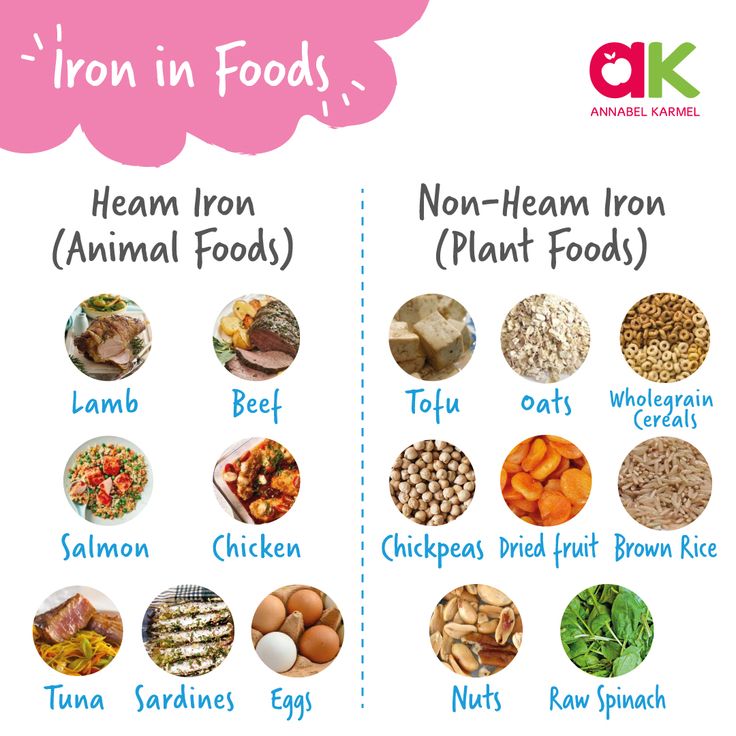 The puree includes only boiled and pasteurized fruits and vegetables. The composition is the main ingredient and pure water.
The puree includes only boiled and pasteurized fruits and vegetables. The composition is the main ingredient and pure water.
Choice of mashed potatoes for the first meal of zucchini, broccoli and cauliflower. The company also produces fruit products. For older children, you can buy food from cod, pink salmon and salmon. The puree has the right consistency.
Advantages
- Free of food coloring and other additives;
- Possibility to buy in soft drinking packaging;
- Environmentally friendly components;
- Uniform consistency.
Drawbacks
- Unusual taste.
One-component purees of this brand are in special demand among buyers. They note a good consistency and the optimal amount of one serving. Not all parents like the smell of the product, but it does not interfere with children, and they eat mashed potatoes with great pleasure.
Diaper
Sady Pridonya recently launched this brand. The manufacturer produces nutritional formulas for children of different ages. The consumer can choose purees from fruits, vegetables or a combination. The product is presented in different containers - glass and cardboard.
The manufacturer produces nutritional formulas for children of different ages. The consumer can choose purees from fruits, vegetables or a combination. The product is presented in different containers - glass and cardboard.
The main ingredients are fruits and vegetables, while the crops are grown by the company. For the manufacture of products GMOs, dyes and preservatives are not used. The composition contains only natural products and water. And the quality of the indicators is controlled by the Russian Academy of Medical Sciences. The absence of expenses for the transportation of purchased raw materials allows us to reduce the cost, which cannot but attract.
Advantages
- Large selection of purees for babies from 4 months old;
- Manufacture on high-precision equipment;
- Convenient packaging;
- Affordable rates.
Drawbacks
- Use of sugar for some types of puree.

Users are attracted by a large assortment. In addition to mashed potatoes, you can buy fruit drinks, juices and cereals. High demand for puree from several components. It can be fruits or berries with the addition of dairy products.
Topic
The Concern occupies a leading position among domestic producers of baby food. Products are made using the latest equipment. The Tema brand offers compositions with fruits, vegetables, meat, combined variations. For complementary foods, vegetable compositions of zucchini, carrots and pumpkins are suitable.
In the manufacturing process, only natural and easily digestible vegetables are used, which normalize the functioning of the digestive system. In addition to purees, the company produces juices and fermented milk products.
Advantages
- Affordable prices;
- High quality products;
- Huge assortment;
- Variety of packaging.

Drawbacks
- Use of a small amount of starch.
Many people like that Tema puree can be bought both in the nearest store and in the pharmacy. Also noted is the ideal consistency, the absence of unnecessary inclusions. Vegetable puree has a pleasant smell and color. Often promotions are provided on Tema puree in supermarkets.
The best foreign purees for the first feeding
A certain range of foreign manufacturers is represented on the market. Some moms and dads tend to choose them, because many companies have an excellent reputation and centuries of history. The best purees for the first feeding from foreign brands in the review are represented by five positions.
The rating of baby puree supplied to the Russian market from abroad was built primarily on the basis of pediatricians' estimates. The quality of raw materials, nutritional properties, relevance of benefits for children living in our country were taken into account.
Gerber
Products from Nestle are known for their high quality and wide range, its laboratory is one of the best in Europe. For feeding babies, mashed potatoes with one component of vegetables are suitable. The product is distinguished by a fine fraction and an environmentally friendly composition. The Gerber brand also produces food for older children. And meat purees will help make complementary foods more varied. The light texture of meat is pleasant to kids.
The manufacturer also sells multi-component products. In one puree, vegetables and milk are combined, berries are also added, enriching the child's body with organic acids, minerals, and vitamins. In addition, Gerber provides desserts made from milk with fruits.
Advantages
- 4 vegetable purees;
- Products pass approximately 250 checks;
- Convenient single serving packaging;
- Special retractable caps.
Drawbacks
- Not identified.
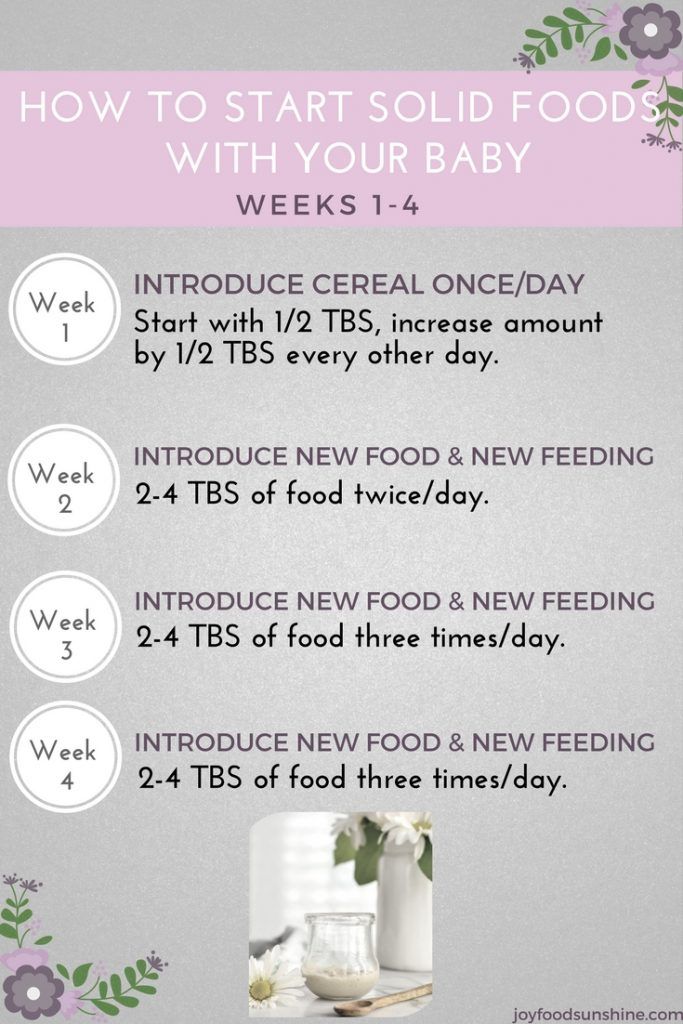
Users love the manufacturer's packaging. Through the glass you can see the consistency and color of the dish. Jars have lids with a special ledge, which was developed by the company's specialists. Convenient flexible packaging pouch.
Semper
The Swedish brand produces baby food for newborns and preschool children. Not only mashed potatoes, but also cereals, juices and milk mixtures are offered to choose from. Semper offers four steps of complementary foods. For children from 4 months - monocomponent formulations. For crumbs from six months - meat mixtures and assorted fruits. Fish dishes - from 7 months. And the combination of meat and vegetables in one product is suitable for children from a year and older.
The composition does not contain thickeners and dyes, but only chopped vegetables and water. From Semper you can buy food for a snack on a walk, the first complementary foods and expanding the baby's menu.
Advantages
- The first stage contains homogenized vegetables;
- European quality level;
- Testing at every stage of production;
- Improved composition.

Drawbacks
- Small portion package not included.
Consumers believe that the brand does not offer such a high price in terms of volume. Zucchini with potatoes, zucchini with potatoes and broccoli are in special demand. There are no additional components in the vegetable mixture, except for a small amount of rice flour.
HiPP
The company has a large assortment of baby food. For the first feeding from 4 months, mixtures of zucchini, cauliflower, carrots, broccoli and pumpkin are suitable. From six months you can buy a jar of turkey, beef or rabbit meat.
Hipp canned products are distinguished by their natural composition. Mixes include chopped vegetables, fruits, meat. There is nothing else in the product except water. The contents of the jars have a thick consistency, without lumps. Food has a pleasant taste and smell. The company uses convenient, safe packaging with a bright design that children love so much.
Advantages
- Wide range for first foods;
- High quality;
- Choice of volume - 80 and 125 gr;
- Uniform consistency.
Drawbacks
- Expensive product.
With regular consumption of the product, parents noticed that the child's stool normalizes, the intestines begin to work stably. Healthy canned food is relevant in winter, when it is difficult to purchase fresh vegetables and fruits.
Heinz
A company from the USA delivers goods to different countries of the world. In the course of work, strict control systems, innovative equipment, and the latest advances in technology are used. The applied technologies allow keeping minerals and vitamins in the composition.
Heinz offers standard first food kits. In addition to vegetables, the composition contains cornmeal. This ingredient allows you to achieve a uniform consistency. Delicious puree like most children. The company responsibly approaches the compatibility of various components in the formulations.
Delicious puree like most children. The company responsibly approaches the compatibility of various components in the formulations.
Advantages
- Meets stringent standards;
- Rich taste;
- Soft consistency;
- Large selection.
Drawbacks
- Not identified.
Heinz baby food is recommended by pediatricians to parents, as it contains minerals and vitamins that are important for the health of the child. Fiber stimulates the digestive system. Eating creates a feeling of satiety for a long period.
The company makes baby food with the best sugar-free ingredients. Only natural saccharides are present. The products are free of gluten, salt and flavors. The puree contains corn oil, which acts as a source of omega acids. And the use of rice flour provides a better consistency, it is also rich in amino acids and fiber.
Cauliflower, zucchini, broccoli or carrots are available as first foods. The age of the child is indicated on the package. The recipe complies with European standards regarding the nutrition of children. The products contain vitamins that are important for the full development of the crumbs.
The age of the child is indicated on the package. The recipe complies with European standards regarding the nutrition of children. The products contain vitamins that are important for the full development of the crumbs.
Advantages
- Soft consistency;
- The mixture is thoroughly ground;
- Contains useful components;
- Natural pleasant taste.
Drawbacks
- Presence in the composition of rice flour.
Parents note the good taste of baby food from Bebivita. As well as the use of safe products for the composition. Positive reviews are found about the quality of the packaging and the affordable price.
Which puree for the first feeding is better to buy
To find out exactly whether the baby is ready to introduce complementary foods, you need to consult with your doctor. It should not be ignored if the child refuses food and spits it out. It may be worth postponing the introduction of complementary foods 1-3 weeks later.
It may be worth postponing the introduction of complementary foods 1-3 weeks later.
Before buying baby food, read the label carefully. The composition should not contain preservatives, flavor enhancers and palm oil. To restore the intestinal microflora, products with the addition of vitamins are suitable. It is important to look at the expiration date. And also choose content that is well absorbed at a certain age.
According to buyers and pediatricians, the following judgments about manufacturers can be distinguished:
- From inexpensive mashed potatoes - products of the company "Babushkino Lukoshko";
- Product for children of any age can be purchased from the manufacturer "Spelenok";
- Puree for children from 5 months is offered by the Tema company;
- Food from Gerber are suitable for those who appreciate the convenience of packaging;
- Semper puree is a premium product;
- Natural puree without additional ingredients available from Hipp;
- Heinz offers the most vitamin purees;
- Agusha and Hipp are recommended to stabilize the digestive system.

Usually, the specialist determines the period when it is possible to introduce puree for the first feeding of the child, according to the weight of the baby. Sometimes the decision is made earlier, if weight is not gained, the body suffers from a lack of vitamins and valuable nutrients.
The rating will help you choose mixtures that can replace natural feeding. And the reviews of parents and specialists will help you choose the right food for your child.
8 best baby puree manufacturers in 2023
The first feeding of a baby is an exciting event for parents, which causes a lot of controversy: what products are best to use, at what age to start, cook food for the baby yourself or buy store-bought options. Manufacturers have taken care of the proper nutrition of babies and have prepared different options for baby purees that are suitable from a very early age. Today we will discuss which of them will be useful and safe for the baby, and which purees are better to refuse.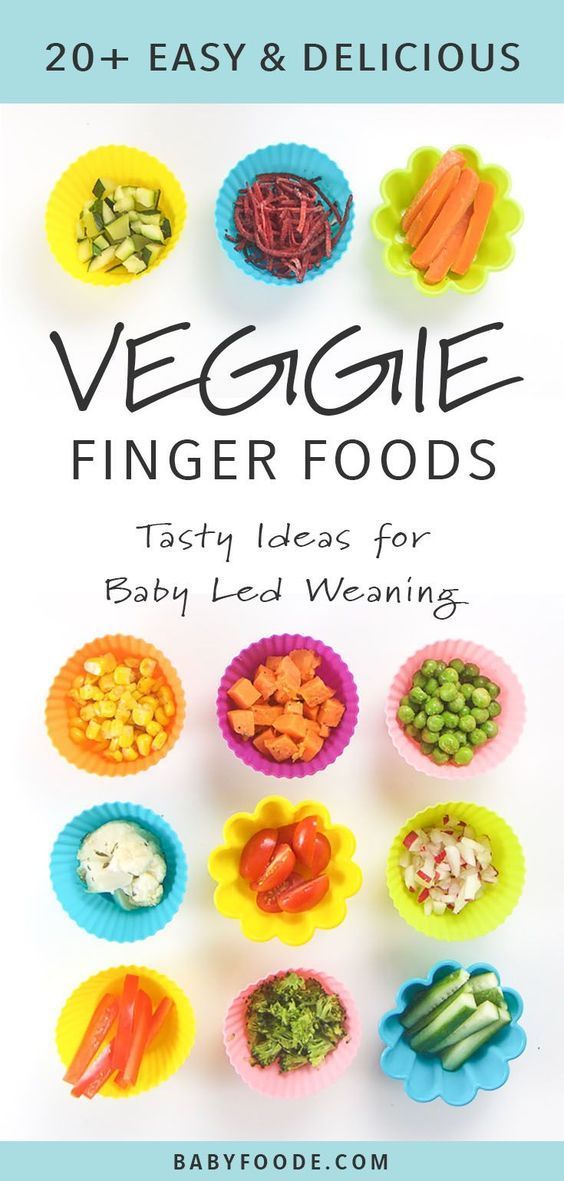
Content [show]
- What to pay attention to when buying children's puree
- Street
- Age restrictions
- Type of packaging
- Information on label
- What puree to choose for the first feeding?
- How to give puree to a child?
- Can I make my own puree?
- What are the pros and cons of store-bought baby food options?
- Can I be allergic to puree?
What to look for when buying baby puree
Composition
There are 4 variants of baby purees:
- vegetable purees - from carrots, zucchini, broccoli, pumpkin, potatoes, spinach, cauliflower;
- fruits and berries - pear, apricot, banana, apple, plum, currant, blueberry;
- meat - veal, chicken, turkey, rabbit;
- fish - based on hake, pollock, cod, pink salmon.
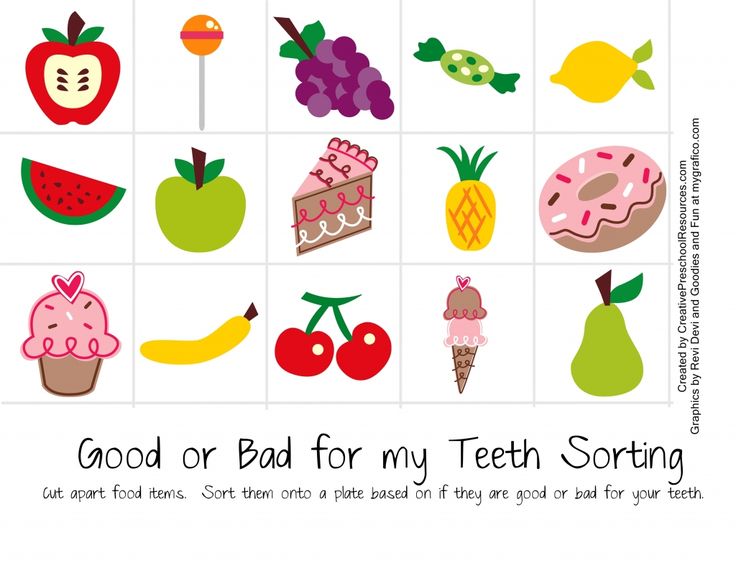
Prohibited ingredients include flavor enhancers, artificial colors, flavors and preservatives. The content of salt, sugar, soy proteins in baby puree is undesirable. The ideal version of the product should include only 2 components - natural fruits / vegetables / meat and water to create the right consistency.
Age limit
Most baby purees are for babies 6 months and older, the recommended age for breastfed babies. In this case, the label will be marked "6+". Multi-component puree options may be labeled “7+”, “8+”, etc. If you are choosing the first fruit and vegetable food for an artificial baby, then pay attention to products that are allowed from 4 months.
Package type
The best option is a glass jar with a hermetically sealed lid. This is the most environmentally friendly and reliable way to pack mashed potatoes, since glass does not react with food and does not affect their properties. It is better not to buy puree in plastic containers, as it may contain compounds that are toxic to the baby.
Product size
You can find various options on sale - from the minimum 80 ml to large economy jars of 190-200 ml. When buying, be guided by the age and nutritional needs of the baby, since an open jar with the product is stored for no more than 1-2 days, and during this time you need to use the entire volume. In order not to throw away the leftovers, for a baby up to 7-8 months old who are just starting to eat complementary foods, take a package of the minimum volume. Older children who like fruit and vegetable purees should take a large container - it's cheaper.
Information on the label
Reliable manufacturers of baby food indicate the most detailed information that may be of interest to parents:
- date of manufacture and end date of consumption;
- shelf life after opening the can;
- requirements for storage conditions;
- complete list of ingredients and their nutritional value;
- cooking method (optional).

If baby food is intended for infants with specific dietary requirements, the manufacturer must mark the front of the label.
2023 Baby Puree Manufacturer Ranking
1. Best Foreign Baby Food Brand: Gerber
Compare Prices multicomponent purees. Products are distinguished by the highest level of quality and strict control at all stages of production.
Editor's estimate:
A 90-year-old premium brand of baby food from the USA and has earned the respect of parents around the world. Pediatricians and nutritionists are involved in the development of baby food in order to create the highest quality and healthy product that is suitable from the first months of life. By production seasonings, preservatives and flavorings are not used.
For the first stage of complementary feeding, the manufacturer offers one-component vegetable and fruit purees. There are also multi-component formulations with a combination of several vegetables, the addition of meat. Baby food is packaged in glass jars of 80 g.
Baby food is packaged in glass jars of 80 g.
Gerber products have no flaws, but the cost of products is higher than other brands, so it is not available to all parents.
Pros
- many baby food options;
- quality assurance;
- optimum pack size;
- safe composition.
Cons
- uneconomical option.
2. The best Russian baby food brand: Frutonyanya
Compare prices
Why we liked it: various variants of baby purees for babies from 4 months from a domestic manufacturer, which are distinguished by an optimal price-quality ratio.
Editor's estimate:
The Frutonyanya brand is part of the PROGRESS concern, and has been developing and producing high-quality ready-made food for babies for about 30 years. In the brand's product line, you will find both carefully chopped vegetable purees for the first feeding, and more diverse multi-component formulations for babies from 7 months.
The products contain natural healthy ingredients, the puree does not contain synthetic additives and potentially allergenic products. At the same time, the cost of such purees is lower than foreign analogues, and many parents choose them for their babies.
Please note that some items are available in plastic packaging. They are convenient to take with you for a walk, but for permanent use it is better to choose glass containers, which are more environmentally friendly.
Plus
- is more economical than Gerber;
- organic compound;
- wide range of flavors;
- hypoallergenic formulations.
Cons
- has plastic packaging.
3. HiPP
Compare Prices
Why we like it: is a worthy competitor to the Gerber brand, which produces many varieties of baby foods for use from 4 months of age. HiPP products are famous for German quality and pleasant tastes.
Editor's estimate:
The German company HiPP has a long history and high quality products for children. The range includes food options that are suitable for babies from 4 months. In the manufacture of puree, organic products are used that are grown on special plantations, so the products are as safe as possible for children.
The composition of the food is good - only the main product and water. The food has a good uniform texture, pleasant taste and smell.
HiPP baby purees have the same drawback as Gerber products - they are significantly more expensive than other options from our rating, so many parents cannot buy it on a regular basis.
Pros
- organic products;
- large assortment;
- pleasant taste;
- no harmful ingredients.
Cons
- products are not available to all parents.
4. Heinz
Compare prices
Why we liked it: baby purees with an original recipe that takes into account the basic needs of children of different ages.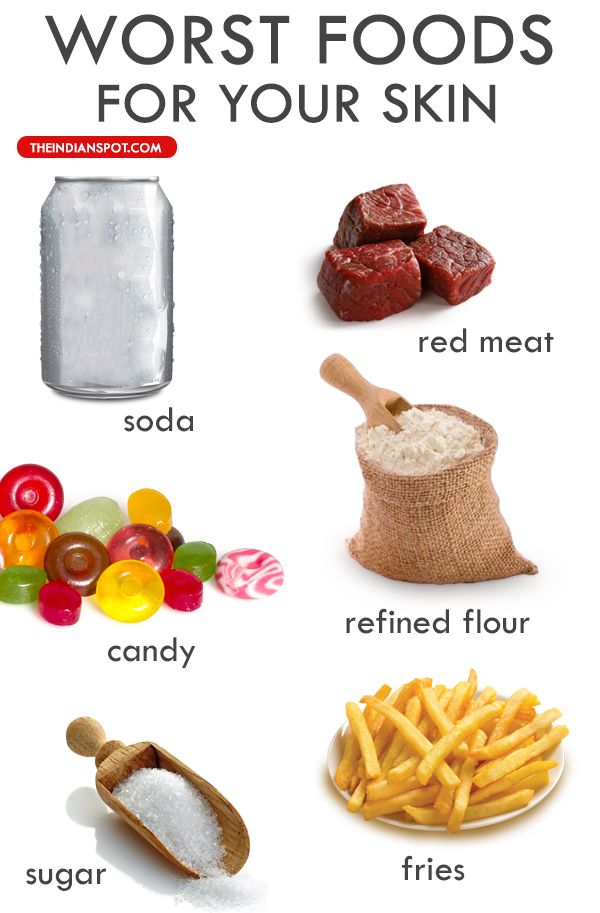 The products are of good composition and high quality.
The products are of good composition and high quality.
Editor's estimate:
Like Gerber, Heinz products are made in the USA. The history of the company has more than 100 years of successful experience, and today the products of this brand are supplied to most countries of the world. The manufacturer produces baby purees without preservatives, GMOs, flavorings and other components harmful to children.
Heinz offers a variety of single and multi-ingredient nutrition options designed to meet the needs of your baby at every stage of development. Purees have a rich taste, a pleasant texture, and are liked by most children.
Please note that cornmeal is present as a thickener. This is a safe product, but sometimes it can provoke allergic reactions.
Pros
- large assortment;
- composition without synthetic components;
- complete set of beneficial nutrients;
- pleasant organoleptic properties.
Cons
- there is a risk of allergy.

5. Nutricia
Compare Prices
Why we love it: is a premium baby food with a special 3-step system that helps parents to feed correctly. Products have safe hypoallergenic compositions.
Editor's score:
Nutricia was founded in the Netherlands and is now part of the large Danone Corporation. Scientists, technologists and pediatricians are working on the development of baby food in order to create the most useful and safe formulations for babies of different ages. The composition does not contain harmful components, GMOs and potential allergens.
Nutricia purees, including those produced under the Milupa brand, are intended for babies over 4 months old, in addition, the manufacturer offers three stages of introducing complementary foods - from one-component vegetable purees to more complex formulations.
The main disadvantage of Nutricia products is that purees are too thin, which is why the baby does not train to chew food and in the future it is more difficult for him to switch to other complementary foods.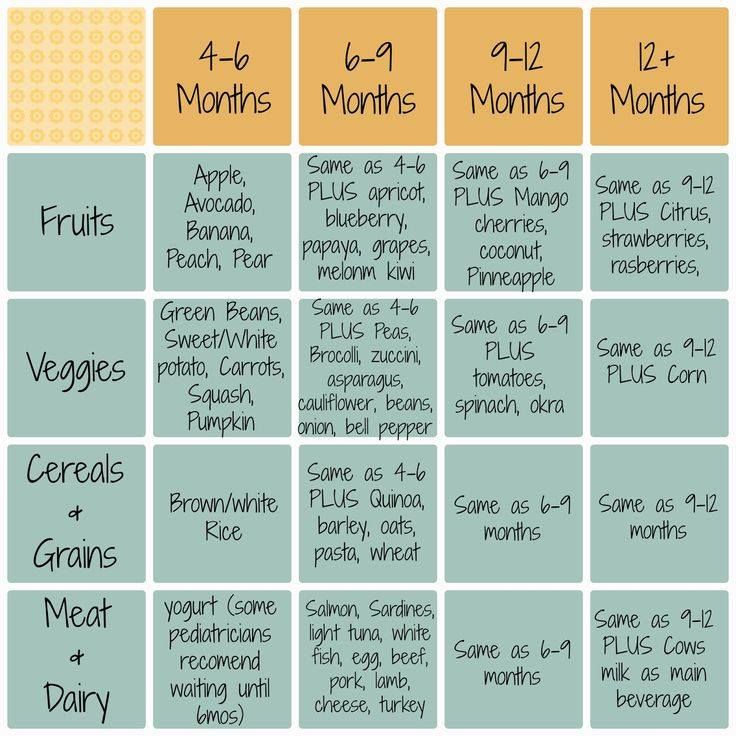
Pluses
- three-stage feeding system;
- formulations free from preservatives and flavor enhancers;
- for babies from 4 months;
- is based on scientific research.
Cons
- too thin consistency.
6. Semper
Compare prices
Why we love it: is a popular Swedish baby food brand that offers several lines of organic products for babies from 4 months old.
Editor's estimate:
Semper is Sweden's #1 brand with over 80 years of quality baby food options for babies 4 months to 3 years old. The company offers parents a wide range of purees: both single-component for the first feeding, and multi-component - for older children. All products undergo rigorous quality control, there are no flavorings, dyes, flavor enhancers and GMOs in the compositions. The manufacturer indicates that baby purees are environmentally friendly.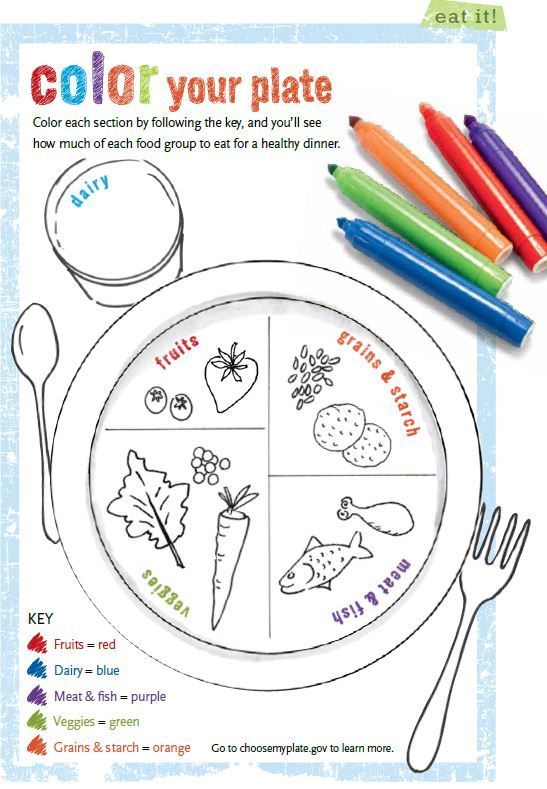
Purees have a good smooth texture and a pleasant taste, so many babies eat Semper products with pleasure. The cost per puree is more affordable than other imported options, but due to the lack of small packages, parents often have to throw away some of the uneaten product.
Pluses
- testing at all stages of production;
- formulation free of artificial ingredients;
- uniform consistency;
- environmentally friendly products.
Cons
- only large packages.
7. Grandmother's basket
Compare prices
Why we liked it: is a domestic manufacturer of baby purees according to original recipes, which is distinguished by recognized product quality and completely natural ingredients.
Editor's estimate:
The Russian brand has been on the market for more than 20 years, and during this time has received several prestigious domestic and international awards for its products. "Grandmother's basket" is not as well known as "Frutonyanya", but is in no way inferior to this brand. Baby purees are developed with input from pediatricians and nutritionists to provide a quality and healthy product.
"Grandmother's basket" is not as well known as "Frutonyanya", but is in no way inferior to this brand. Baby purees are developed with input from pediatricians and nutritionists to provide a quality and healthy product.
Products from ecologically clean regions are used for production, there are no artificial components in the composition. The product line is quite wide - there are single-component fruit and vegetable purees, multi-component formulations with fish, meat, and vegetables.
Please note that parents note the unusual taste of baby food, which is associated with the author's compositions and recipes. Therefore, some children flatly refuse to eat the products of "Grandmother's Basket".
Pluses
- has been awarded for quality;
- large selection of goods;
- natural formulations;
- was developed by pediatricians and nutritionists.
Cons
- atypical tastes.
8.
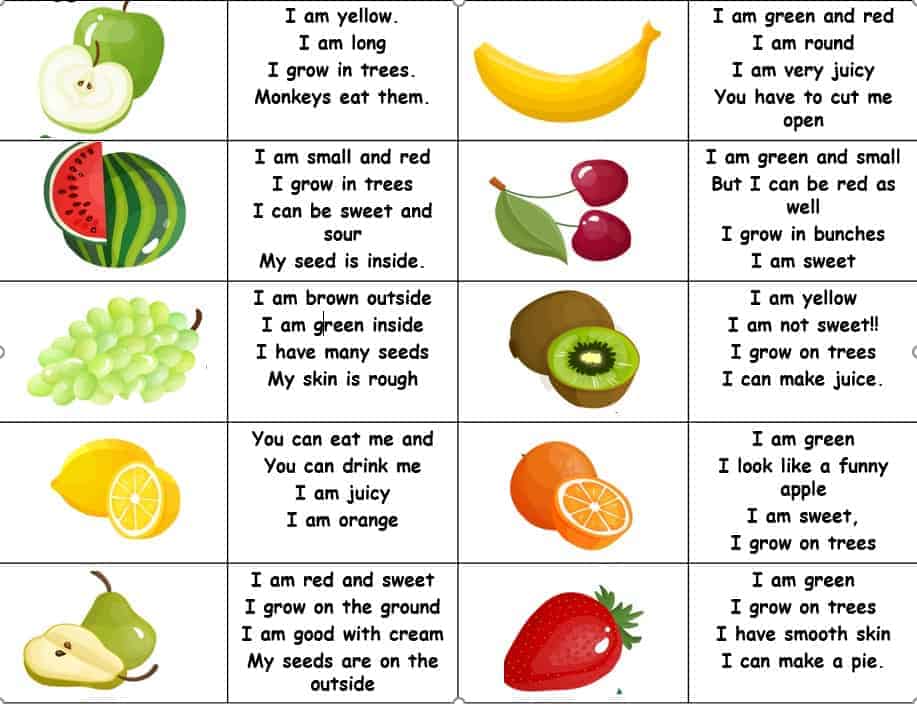 Humana
Humana Compare prices
Why we liked it: is a German brand offering varied and high-quality complementary foods for babies from 5 months old. Products are produced under the supervision of pediatricians.
Editor's estimate:
Humana is a well-known German company that has been on the market for over 65 years. Formulas for baby food are developed with the participation of leading experts in the field of pediatrics and nutrition. Thanks to this, the manufacturer manages to produce balanced and healthy complementary foods for babies from 5 months of age.
Every batch is strictly quality controlled so parents can be sure they are giving their baby the best baby purees. The Humana assortment includes both single-component vegetable and fruit complementary foods, as well as multi-component options.
An important point: the manufacturer produces puree in jars of 125 ml or more, so parents often have to throw away half-eaten product. In addition, Humana contains corn flour, as in the nutrition of the Heinz brand.
In addition, Humana contains corn flour, as in the nutrition of the Heinz brand.
Pros
- German premium brand;
- food for children from 5 months;
- strict quality control;
- was developed by pediatricians.
Cons
- no small pack;
- contains cornmeal.
TOP-5 questions of parents
Which puree to choose for the first feeding?
The best option to start complementary foods is vegetable purees. They are recommended by all pediatricians, since vegetables are the least likely to cause allergic reactions, are easily digested and are suitable for the functionally immature intestines of a baby. To begin with, it is worth stopping at squash, pumpkin or mashed broccoli, and options with the addition of potatoes are given after 1–1.5 months.
If the baby is prone to allergic reactions, carrot and pumpkin puree is allowed only after 8 months!
When the child is accustomed to vegetable foods, you can gradually introduce fruit, meat and fish purees. They are offered no earlier than 7 months, and you must follow the rule - each new product is added to the menu no more than 1 time per week.
They are offered no earlier than 7 months, and you must follow the rule - each new product is added to the menu no more than 1 time per week.
How to give puree to a child?
The introduction of complementary foods is started on the condition that the baby feels well, nothing hurts, there are no acute respiratory infections and other problems, and the intestines work normally. To make the baby more willing to eat puree, offer it before the main meal (breast milk or formula).
On the first day, it is enough to give about half a teaspoon of the new product and see the reaction. Since the child is accustomed to milk, the vegetable taste seems strange to him, and many refuse mashed potatoes. If the same happens to you, you should try again the next day or take a different flavor. Then gradually increase the portion during the week to completely replace one feeding. Other products are introduced in the same way.
A well-known pediatrician, Dr. Komarovsky, tells about 10 basic rules for the introduction of complementary foods in a video.
Can I make my own puree?
If you have the time and desire, there is nothing difficult to prepare. Boil a piece of the selected vegetable until cooked, then crush it to a homogeneous consistency. To prevent the puree from becoming too dense, add water or vegetable broth, and it is more convenient to use a blender to grind. In the same way, you can make meat or fish puree. For children 7–8 months old, it is allowed to add a piece of yolk, vegetable or butter to the finished dish.
Please note that baby food must be of good quality. Ideally, take farm vegetables and fruits that are grown in the most sustainable way.
What are the pros and cons of store-bought baby food options?
Although baby food can be prepared at home, today's parents are more likely to choose ready-made complementary foods. The main advantages of buying baby food:
- Significant time savings in searching for quality products and preparing them;
- handy package that you can take with you on a trip or a walk;
- multi-ingredient formulations developed by pediatricians that contain all the ingredients that are beneficial for the child;
- environmental friendliness and naturalness of products from premium manufacturers.

The main drawback is the price. Baby purees are produced in small jars and are expensive, so preparing complementary foods on your own will be several times cheaper.
Can I be allergic to puree?
Any, even the highest quality puree, can potentially cause allergies, as the baby meets a new product for the first time. Due to the immaturity of the child's immune system and its tendency to hyperergic reactions, in the first year of life, parents often experience food allergies. The most "dangerous" foods are red and orange vegetables, all kinds of berries, exotic fruits (mangoes, citrus fruits).
How to understand that a child has an allergy:
- red rash, blisters appeared on the skin;
- the child constantly scratches the body;
- disturbed sleep pattern;
- the child is naughty, whimpers, refuses to eat;
- stool disorders observed;
- lacrimation, runny nose.
If these symptoms occur, stop complementary foods, start breastfeeding or formula, and take the baby to the pediatrician as soon as possible.



